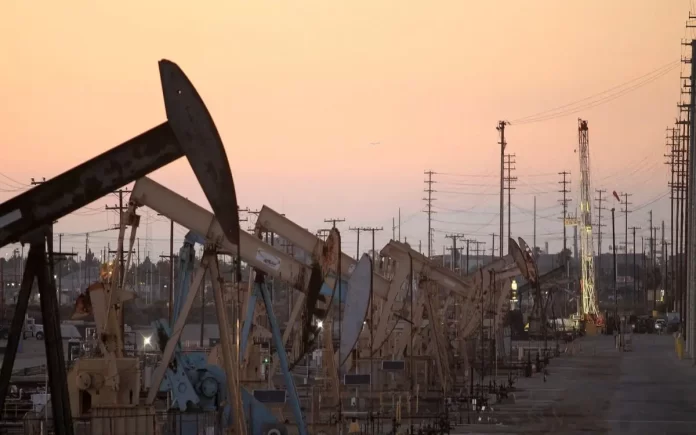New Delhi: Oil prices continued their upward trajectory in Asian trading on Monday, building on gains from the previous week fueled by tightening supply concerns, particularly with the escalation of attacks on Russian energy infrastructure.
As per the report of the international news agency Reuters, Brent crude oil futures for May delivery edged up by 32 cents, or 0.4%, reaching $85.66 a barrel by 0416 GMT. Meanwhile, the April contract for U.S. West Texas Intermediate (WTI) crude saw an increase of 40 cents, or 0.5%, reaching $81.44. The more active May delivery contract for WTI traded 37 cents, or 0.5%, higher at $80.95 per barrel.
“The strikes on Russian refineries added $2-$3 per barrel of risk premium to crude last week, which remains in place as we start this week with more attacks over the weekend,” noted Vandana Hari, founder of oil market analysis provider Vanda Insights. She emphasized that while the risk remains, the next significant move in crude prices will depend on fresh signals.
Over the weekend, one of the strikes resulted in a brief fire at the Slavyansk refinery in Kasnodar, which processes 8.5 million metric tons of crude oil annually, equivalent to 170,000 barrels per day. According to a Reuters analysis, these attacks have collectively idled approximately 7% of Russian refining capacity in the first quarter, affecting the export of crude varieties to various markets, including China and India.
Read More: Antony Blinken Warns of Authoritarian Tech Threat to Democracy
In the Middle East, Israeli Prime Minister Benjamin Netanyahu confirmed plans to advance into Gaza’s Rafah enclave despite international pressure, a move that German Chancellor Olaf Scholz warned would complicate regional peace efforts.
Investors are closely watching the outcome of the U.S. Federal Reserve’s two-day meeting concluding on Wednesday, which is expected to provide clarity on the timing of interest rate adjustments. Tony Sycamore, a market analyst with IG, highlighted that while the Fed is likely to maintain rates this month, the possibility of rate cuts at the June meeting is now evenly balanced. Lower interest rates could stimulate demand in the U.S., the world’s largest oil consumer, thereby supporting oil prices.
Despite a slight dip on Friday, both benchmark oil contracts recorded gains last week. Oil prices had been trading within a range for much of the past month until a bullish demand report from the International Energy Agency (IEA) on Thursday propelled prices to their highest levels since November. The IEA, representing industrialized countries, revised its demand outlook upwards for the fourth time since November, attributing it to Houthi attacks in the Red Sea disrupting oil transportation and leading to a reduction in accessible oil for users. Moreover, for the first time, the IEA predicted a slight supply deficit for this year, instead of a surplus.
U.S. fuel demand also lent support to prices as refineries completed some projects. As of the close of trading on Friday, Brent and WTI futures had risen by 11% and 13%, respectively, in 2024.



